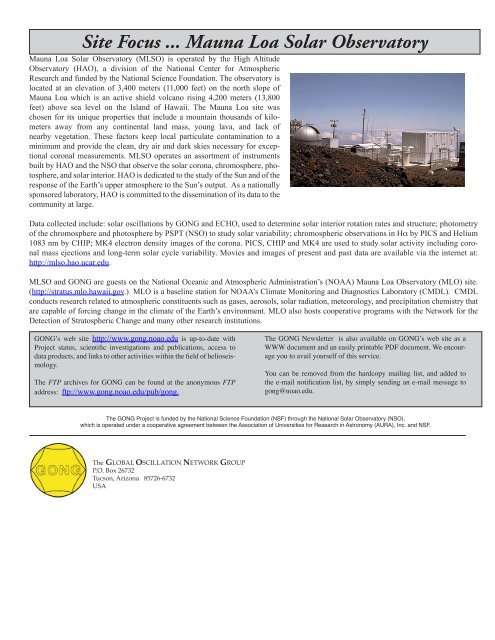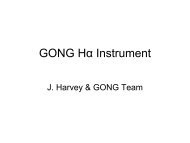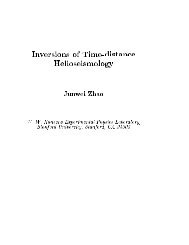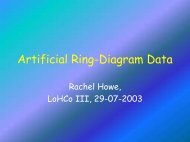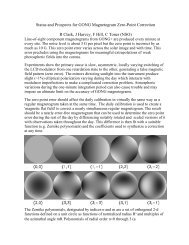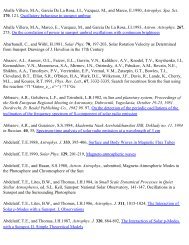GONG Newsletter #31, August - National Solar Observatory
GONG Newsletter #31, August - National Solar Observatory
GONG Newsletter #31, August - National Solar Observatory
You also want an ePaper? Increase the reach of your titles
YUMPU automatically turns print PDFs into web optimized ePapers that Google loves.
Site Focus ... Mauna Loa <strong>Solar</strong> <strong>Observatory</strong><br />
Mauna Loa <strong>Solar</strong> <strong>Observatory</strong> (MLSO) is operated by the High Altitude<br />
<strong>Observatory</strong> (HAO), a division of the <strong>National</strong> Center for Atmospheric<br />
Research and funded by the <strong>National</strong> Science Foundation. The observatory is<br />
located at an elevation of 3,400 meters (11,000 feet) on the north slope of<br />
Mauna Loa which is an active shield volcano rising 4,200 meters (13,800<br />
feet) above sea level on the Island of Hawaii. The Mauna Loa site was<br />
chosen for its unique properties that include a mountain thousands of kilometers<br />
away from any continental land mass, young lava, and lack of<br />
nearby vegetation. These factors keep local particulate contamination to a<br />
minimum and provide the clean, dry air and dark skies necessary for exceptional<br />
coronal measurements. MLSO operates an assortment of instruments<br />
built by HAO and the NSO that observe the solar corona, chromosphere, photosphere,<br />
and solar interior. HAO is dedicated to the study of the Sun and of the<br />
response of the Earth’s upper atmosphere to the Sun’s output. As a nationally<br />
sponsored laboratory, HAO is committed to the dissemination of its data to the<br />
community at large.<br />
Data collected include: solar oscillations by <strong>GONG</strong> and ECHO, used to determine solar interior rotation rates and structure; photometry<br />
of the chromosphere and photosphere by PSPT (NSO) to study solar variability; chromospheric observations in Hα by PICS and Helium<br />
1083 nm by CHIP; MK4 electron density images of the corona. PICS, CHIP and MK4 are used to study solar activity including coronal<br />
mass ejections and long-term solar cycle variability. Movies and images of present and past data are available via the internet at:<br />
http://mlso.hao.ucar.edu.<br />
MLSO and <strong>GONG</strong> are guests on the <strong>National</strong> Oceanic and Atmospheric Administration’s (NOAA) Mauna Loa <strong>Observatory</strong> (MLO) site.<br />
(http://stratus.mlo.hawaii.gov.) MLO is a baseline station for NOAA’s Climate Monitoring and Diagnostics Laboratory (CMDL). CMDL<br />
conducts research related to atmospheric constituents such as gases, aerosols, solar radiation, meteorology, and precipitation chemistry that<br />
are capable of forcing change in the climate of the Earth’s environment. MLO also hosts cooperative programs with the Network for the<br />
Detection of Stratospheric Change and many other research institutions.<br />
<strong>GONG</strong>’s web site http://www.gong.noao.edu is up-to-date with<br />
Project status, scientific investigations and publications, access to<br />
data products, and links to other activities within the field of helioseismology.<br />
The FTP archives for <strong>GONG</strong> can be found at the anonymous FTP<br />
address: ftp://www.gong.noao.edu/pub/gong.<br />
The <strong>GONG</strong> <strong>Newsletter</strong> is also available on <strong>GONG</strong>’s web site as a<br />
WWW document and an easily printable PDF document. We encourage<br />
you to avail yourself of this service.<br />
You can be removed from the hardcopy mailing list, and added to<br />
the e-mail notification list, by simply sending an e-mail message to<br />
gong@noao.edu.<br />
The <strong>GONG</strong> Project is funded by the <strong>National</strong> Science Foundation (NSF) through the <strong>National</strong> <strong>Solar</strong> <strong>Observatory</strong> (NSO),<br />
which is operated under a cooperative agreement between the Association of Universities for Research in Astronomy (AURA), Inc. and NSF.<br />
The GLOBAL OSCILLATION NETWORK GROUP<br />
P.O. Box 26732<br />
Tucson, Arizona 85726-6732<br />
USA


